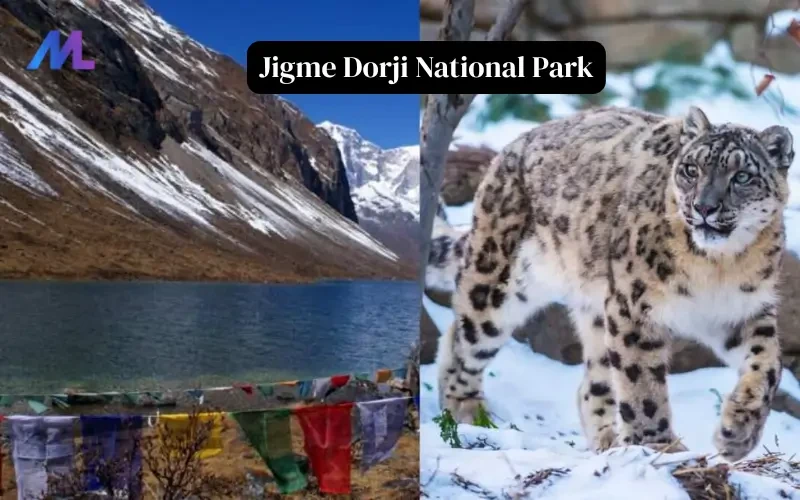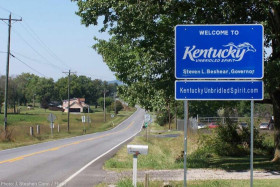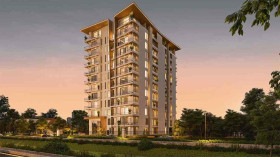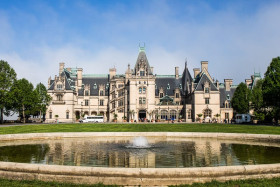Get Ready to Explore the Hidden Treasures of Jigme Dorji National Park
Jigme Dorji National Park is a great expression of the Bhutanese nature of conservation and being in harmony with the natural order of things, and is safely situated in deep, rugged areas of north-western Bhutan. This is the second-largest national park in Bhutan, which occupies an area of more than 4,300 square kilometers and spreads to the Paro, Thimphu, Punakha, Wangdue Phodrang, and Gasa Districts. This exceptional park, which is currently named after the Late King Jigme Dorji Wangchuk, is not only a hotspot of biodiversity. Yet it is a green home alive with a wide variety of wildlife and Himalayan culture, and breathtaking scenery.
Through the blog, we will present all the beautiful wildlife the park has to offer, the beautiful walking paths, and the thrilling adventures of Himalaya, which has put the park on the list of must-visit locations for nature lovers and explorers.
A Home to a Wealth of Biodiversity
Jigme Dorji National Park is called the "crown jewel of Bhutan's natural heritage" very often. This is one of those ecosystems in the Eastern Himalayas that is the most ecologically rich and diverse. The park's landscapes shift from tropical beech forests at lower altitudes to stark alpine rocks at glacier-like heights.
Such a big difference in elevation helped create unique habitats for both plant and animal species. Within the boundaries of the park, over 300 bird species and 40 mammals are sighted, which also includes some of the most elusive and endangered animals around the globe.
Must Visit: Most Beautiful Monasteries to Visit in Bhutan
Notable Wildlife in Jigme Dorji National Park
|
Category |
Species |
Habitat |
Conservation Status |
|
Big Cats |
Snow Leopard, Bengal Tiger, Clouded Leopard |
Alpine and subalpine zones |
Endangered |
|
Ungulates |
Takin (National Animal of Bhutan), Himalayan Musk Deer, Blue Sheep |
Forested and alpine areas |
Vulnerable |
|
Birds |
Himalayan Monal, Blood Pheasant, Satyr Tragopan |
Montane forests |
Rare |
|
Predators |
Red Panda, Himalayan Black Bear, Dhole (Wild Dog) |
Mixed forests |
Threatened |
The Snow Leopard and the Royal Bengal Tiger are two top predators that overlap in their area here, which is a very unique situation, as only a handful of places in the world can be found with this condition. This unique characteristic of the park makes it a wonder of nature and a paradise for wildlife researchers and photographers.
Herds of Takin, which is the national animal of Bhutan, can be found grazing in the alpine meadows. As the legend goes, this particular species that has a cow's body and a goat's head was created by the 15th-century saint Drukpa Kunley, who was also known as the Divine Madman, using magic.
The Hiking Trails and Vistages to Trek
The attractive mountains of Jigme Dorji National Park are home to some of the most jaw-dropping trekking routes one can find in the Himalayas. These paths take you through highland faunal zones near passes, glacial valleys, and secluded villages, letting hikers sight both the natural beauty bespeckled with Bhutanese culture.
The Snowman Trek - The Ultimate Challenge
Generally regarded as one of the toughest treks in the world, the Snowman Trek passes through Jigme Dorji National Park's northern part. It takes about 25–30 days to complete and crosses 11 high-altitude passes, including several over 5,000 meters.
A very good reward for trekkers is the visible rare peaks, including that of Mount Jomolhari (7,314m), and Mount Jichu Drake, as well as other snow-covered summits. The pathway also leads to the remote walled communities where you mingle with the nomadic herders and learn about the mountain culture of Bhutan.
Jomolhari Trek - The Most Popular Trail
If you are looking for a much shorter, but equally impressive trek, the Jomolhari path is perfect for you. This route, winding its way into the park, starts near Paro and is between 8 and 12 days long. The route will take you to Soi Yaksa and Lingzhi, where you will enjoy the stunning views of Mount Jomolhari.
On the trail, you will see alpine meadows where yaks graze, surrounded by wildflowers, and cliffs home to ancient monasteries.
Laya Gasa Trek - Culture and Hot Springs
This trail is all about enjoying the view as well as cultural interaction. The path takes you to Laya village, the land of the indigenous Layap community, famous for their peculiar bamboo hats and traditional lifestyle. The trek ends in Gasa, where voyagers can take a soul-soothing bath in the natural hot springs, which are believed to have healing properties.
Flora and Ecosystems
Vegetation in the park is metamorphic due to the layering of altitude; therefore, a variety of biomes is displayed.
The Subtropical Zone (1,200–2,000 m) is the zone where sal-dominated forestland and mixed heavy-leafed jungles exist.
Temperate Zone (2,000–4,000 m): Blue pine, rhododendron, and oak trees are mainly found here.
Subalpine and Alpine Zones (4,000–7,000 m): These zones include juniper, dense shrubs, glaciers, and alpine meadows.
The season of rhododendrons, with its beauty and charm, is the time when the whole park seems to be in a riot of colors. These flowering festivals invite the world to come and see the spectacle through the eyes of floral surgeons, botanists, and nature enthusiasts.
Cultural Traits Within the Park
Jigme Dorji National Park is not only a sanctuary of nature; it is also a cradle of culture. Several ancient dzongs (fortresses), monasteries, and sacred sites lie within its borders, reflecting Bhutan’s deep spiritual connection to nature.
Among the most revered is Mount Jomolhari, which the Bhutanese believe is the home of a goddess. The mountain is considered sacred and holds a prominent position in their religious beliefs. Over the years, the area has been host to many pilgrims who visit for spiritual reflection and blessings.
The park also harbors trade routes that were once used by Bhutan to communicate with Tibet. These paths are reminiscent of the age-old Bhutanese mountain civilization and are a key to the opening of the closed world.
Himalayan Adventures and Activities
Jigme Dorji National Park is an abode of adventure, and thus, the adventure starts from where you wish it to.
Camping Under the Stars
Set camping zones are located on the trekking routes, which let travelers sleep under a dome of Himalayan stars, see the night park, and spend crisp and peaceful evenings listening to yak bells and the sounds of distant rivers.
Wildlife Photography and Birdwatching
The trails within the park provide not only wildlife sightings, but also bewitching backdrops that make photography a tremendous experience. The lucky birdwatchers may see the rare Ward's Trogon or the Rufous-necked Hornbill, while photographers are likely to have a glimpse of snow leopards or red pandas.
Hot Springs at Gasa
Gasa hot springs are the best destination for relaxation that a tired backpacker can find after several days of trekking. The hot springs are naturally heated and are said to have medicinal and curative properties.
Cultural Encounters
The neighboring villages, such as Laya, Lingzhi, and Chebisa, are all handfuls of houses dotted in lush alpine meadows, showcasing their inhabitants and cultural awareness. The family is the epitome of hospitality, where you will be invited for butter tea or local yak cheese, which is a very original way to experience the cultural immersion.
Conservation and Sustainable Tourism
Jigme Dorji National Park is essential for Bhutan's devotion to eco-friendliness as it is part of the Eastern Himalayan conservation corridor. The park plays a crucial role in the protection of endangered species and maintenance of ecosystems, which in turn provides fresh water and clean air to the region.
The Bhutanese government pursues a "high value, low impact" tourism model to preserve the park as pristine as possible. Visitors must get permits and are encouraged to travel with local licensed guides. The revenue from this scheme supports conservation projects, local communities, and environmental education.
Best Time to Visit
The best time to visit Jigme Dorji National Park is during the spring (March to May) and autumn (September to November). The weather is good, the trails are accessible, and the landscapes look their best in these seasons.
The winter months can be too cold in the higher icy areas, while the summer monsoon season can be a problem for trekkers, as the rain can be heavy.
Quick Facts Table
|
Feature |
Detail |
|
Location |
Northwestern Bhutan |
|
Area |
4,349 sq km |
|
Established |
1974 |
|
Altitude Range |
1,200 m – 7,314 m |
|
Major Peaks |
Jomolhari, Jichu Drake, Masagang |
|
Best Time to Visit |
March–May, September–November |
|
Entry Requirement |
Park Permit via Bhutan Tourism |
|
Popular Treks |
Snowman, Jomolhari, Laya-Gasa |
|
Notable Wildlife |
Snow Leopard, Red Panda, Takin |
Conclusion
To travel to the Jigme Dorji National Park is not just a walk in the heavenly pristine area, but a journey of deep immersion into the Bhutanese spirit. Every path tells tales, every mountain has a voice, and every meeting with nature revitalizes a person.
Be it walking over glacial valleys, being a witness to rare living creatures, or just taking advantage of the fresh air in the Himalayas, the park will forever remind you of the deep connection between the human race and nature. In the core of Bhutan, the untouched, unspoiled, and extraordinary Jigme Dorji National Park calls for you.


















